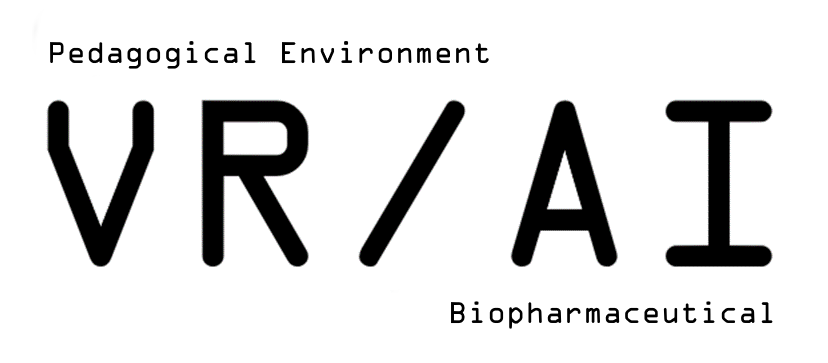VR/AI contributes to accelerating talent development in the life sciences sector in Quebec through the application of learning technology: We accompany the expected evolution of job roles in the biomanufacturing industry using modern learning technology such as interactive virtual reality simulations and artificial intelligence solutions.
#VIRTUAL REALITY
#VR
#AUGMENTED REALITY#ARTIFICIAL INTELLIGENCE
#AI
#TECHNOLOGY#BIO-MANUFACTURING
#DIGITAL
#EDUCATION
The need for VR/AI:
With industrial biologics production facilities difficult to access, dedicated training facilities are needed. Given their expense, this constraint is likely to persist and can be managed by moving as much of the situational training as possible off the production floor. In other words, VR training experiences can allow students to be drilled in procedures and equipment functionality before ever gowning up. The importance of this cannot be understated – instructors for biomanufacturing with industry experience are already in very short supply. This additional quality pedagogical support is crucial.
Prior to the COVID 19 pandemic, the biologics sector was already struggling with a shortage of qualified personnel: the emergence of mRNA vaccines has resulted in the construction of many new production facilities, greatly increasing the pressure on the education system to help close the labour gap. A crucial constraint in closing this gap is practice in realistic environments – this simulation will enable a much more effective use of constrained resources and give many more students their first glimpse of an industrial scale production floor.
In this industry, available qualified labour is the catalyst for capital investment as cities race to become hubs of a rapidly growing industry. Multinationals are increasingly committed to producing vaccines in Montreal, making a VR environment like ours essential.
VR/AI project scope:
This is primarily a multi-user virtual environment whose purpose is to include instructors and students in a common learning environment. It will provide a space and an interim step to allow pedagogy to be developed in a way that harnesses the potential of VR in the classroom. It will serve as a teaching assistant, registering the physical training steps and delivering decision support to the instructor. Further, it targets a smooth transition from current teaching methods and can effectively act as a surrogate industrial production facility, thus able to accelerate the effectiveness of programs already underway today.
This project has more in common with the construction of a real-world facility than with the design of a program, module, or course – it is the canvas on which the pedagogy can be painted according to each instructor’s needs. Its primary elements include:
- GMP compliant floor space
- Working interactive models of industrial-scale equipment such a bioreactor and pipette
- Smaller-scale items and tools that one would expect to find in a real-world facility
The simulation will be offered to schools and industry alike, as will the possibility to model new equipment and environments. We will also use VR environments to model future real-world production floor layouts, allowing production teams to be oriented and trained while real-world construction is underway, and while some aspects of construction remain open to redesign or rearrangement.
In parallel, Artificial Intelligence (AI) will be used not only to develop and maintain a real-world competency model but will also be integrated to interpret the body language of participants with it. By finding KPIs in the virtual world that are analogous to real-world equivalents, the AI will deliver insight to the instructor on the progress of their students within framed exercises.
To support the goal of the VR and AI elements, we are also adding the development of a mobile application, which will repurpose the 3D models developed for VR to create a reference app for students and industry alike. This app will demonstrate step-by-step instructions for the set up and operation of modeled equipment in the first stage, to which we will add gamified scenarios at a later date. In addition, we are in the process of 3D printing a pipette to build our own mixed reality device that will enable students to practice muscle memory.







